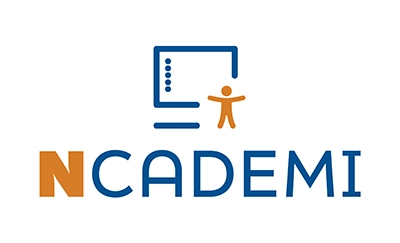Addressing Accessible Materials in the IEP: SEA Examples
The below table provides examples of how some state educational agencies (SEAs) address students’ need for accessible materials in the Individualized Education Program (IEP). These examples are provided for informational purposes only and are not endorsed by NCADEMI. To suggest updates or corrections or to add an example from your state, please contact us.
| State Resource(s) | Summary of Related IEP Guidance |
|---|---|
| Delaware IEP | “Intervention supports and strategies for students who have difficulty accessing and/or using grade-level textbooks and other core materials in standard print formats.” (p 3) |
| Indiana IEP & NIMAS Forms | “Does the student need instructional materials provided in an accessible format to receive a free and appropriate public education? (FAPE) If Yes, describe the environments, tasks, tools, and services related to their provisions:.” (Indiana IEP p 18) |
| Iowa Special Factors Considerations | To help IEP teams engage in individualized student planning, Iowa has created the Accessible Educational Materials (AEM): Special Factor Considerations resource to guide professionals and families through the process of considering a student’s need for AEM. |
| Maine IEP (Word doc) & Print Disabilities: Consideration for Accommodations | “Does the child have a print disability that requires accessible educational materials (AEM) to access the curriculum? If yes, what type of accessible educational materials (AEM) does the child require?” (Maine IEP p 1) |
| Minnesota Quick Guide to Accessible Educational Materials (AEM) (PDF) | Minnesota’s Quick Guide to Accessible Educational Materials (AEM) provides an overview of AEM, eligibility criteria, procedures for obtaining AEM, and resources for educators and individuals to access AEM across various formats and platforms. |
| Oregon IEP (Word doc) | “Does the student require one or more specialized formats (braille, large print, audio, and/or digital text) of educational materials because blindness or other disability prevents effective use of standard print materials?” (p 4) |
| Vermont IEP | “The IEP team has determined that the student is eligible for the support of accessible instructional materials which have met the National Instructional Materials Accessibility Standards for print disabilities. Identify the supports that will be provided for school personnel and parents to implement the IEP.” (p 18) |
| Virginia Sample IEP (Word doc) | “Whether the student requires assistive technology devices and services. When considering whether assistive technology is required, the IEP team may refer to the Virginia Assistive Technology Resource Guide to facilitate the discussions about goals and objectives, areas of difficulty, and whether AT devices or services are needed, and whether accessible instructional materials in alternate formats are needed.” (p 4) “The Present Level of Academic Achievement and Functional Performance summarize the results of assessments that identify the student’s interests, preferences, strengths and areas of need, including assistive technology and/or accessible materials.” (p 5) “Accommodations may be in, but not limited to, the areas of time, scheduling, setting, presentation and response including assistive technology and/or accessible materials.” (p 8) “Accommodation(s) must be based upon those the student generally uses during classroom instruction and assessment, including assistive technology and/or accessible materials.” (p 10) “When discussing FAPE for this student, it is important for the IEP team to remember that FAPE may include, as appropriate: Assistive Technology and/or accessible materials.” (pp 11 & 13) “These services are the special education services and as necessary, the related services, supplementary aids and services based on peer-reviewed research to the extent practicable, assistive technology and/or accessible materials, supports for personnel, accommodations and/or modifications and extended school year services* the student will receive that will address area(s) of need as identified by the IEP team.” (pp 11 & 13) “The team may consider placement options in conjunction with discussing any needed supplementary aids and services, accommodations/modifications, assistive technology and/or accessible materials, and supports for school personnel.” (pp 12 & 14) |
| Wisconsin IEP Linking Present Levels, Needs, Goals, and Services Form (Word doc) | “Consider any item, piece of equipment, product system, or service to increase, maintain, or improve the student’s functional capabilities. In addition to other needs that require assistive technology, discuss if the student accesses, uses, and derives meaning from age or grade level standard printed text when considering accessible education materials (AEM) and the need for assistive technology.” (p 2) |
